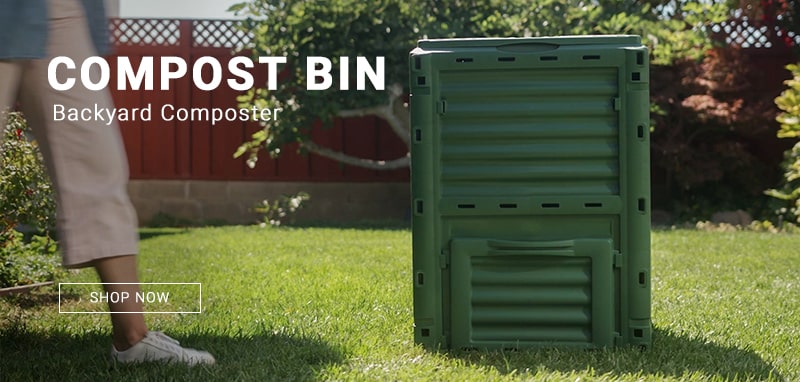Coffee grounds make a terrific addition to a compost pile. They are beneficial for your garden soil and one of the food wastes that can be used as fertilizer. If you’re a regular coffee drinker, you can put your used coffee grounds into your backyard compost bin and minimize your carbon footprint.
In this guide, we’re listing down ways to use coffee grounds for composting:
Fast Facts About Coffee

- Coffee grounds contain approximately 2% nitrogen by volume
- Coffee grounds have a close to-neutral pH level of 6.5 to 6.8 pH
- When added to soil, coffee grounds improve soil structure
- Water-soluble acids are retained in coffee, not in the coffee grounds
- Coffee grounds are ideal for composting because they’re a great source of nitrogen
- There are anecdotal pieces of evidence suggesting coffee grounds repel snails, ants, and slugs in the garden
- Dry coffee grounds repel water, so these are best used moist
Composting with Coffee Grounds
Coffee grounds are best added to static compost. This composting method involves piling up the organic matter, so bacteria break it down. As the pile breaks down, it heats up. Once the heated organic matter “cooks”, the compost turns brown and crumbly with a distinct earthy smell.
To add coffee grounds to a compost bin, create a ⅓ layer of dried fallen leaves, ⅓ fresh grass clippings, and ⅓ layer of coffee grounds. You can also add four parts of shredded fallen leaves to one part coffee grounds.
You have to mix the coffee grounds with the other organic materials well. If you leave a thick layer of coffee grounds unmixed, the layer will dry out and become a compact barrier where water cannot pass through. This will kill the microbes breaking down the organic materials in your compost bin.
Some Things to Remember About Coffee and Plants
It’s essential to consider the balance between nitrogen and carbon-based materials if you’re using coffee grounds. Coffee grounds contain nitrogen, although they shouldn’t be used as a nitrogen fertilizer. Add a little nitrogen fertilizer simultaneously if you’re using coffee grounds directly into the soil to boost nitrogen content.
Some gardeners would add lime or wood ash along with coffee grounds to neutralize its acidity. This is not necessary, but if you must, opt for a ratio of 1 cup of lime or wood ash to 10 pounds of coffee grounds.
Coffee grounds can be safely used in compost but keep the total volume to 10% to 20%. Adding too much coffee grounds could disrupt the activity of the microbes that break down organic matter. Ideally, limit the coffee grounds content in the compost to no more than a third of the overall volume.
Coffee grounds do more than enrich the compost; they encourage the growth of organisms that break down organic matter. Treat coffee grounds as green composting materials. To speed up the breakdown of composting materials, add shredded coffee filters along with coffee grounds because the filters are rich in carbon nutrients – a type of brown material.
How long does it take for coffee grounds to compost?

It takes about three to six months before coffee grounds break down entirely in the compost. Turn the compost once every week to speed up the breakdown of materials.
What kind of plants love coffee grounds compost?
Once the coffee ground-enriched compost is ready to use, we suggest amending the soil to grow acid-loving plants such as hydrangeas, rhododendrons, hollies, azaleas, lily of the valley, blueberries, carrots, and radishes.
Which plants do not like used coffee grounds compost?
Some acid-sensitive plants won’t fare well when amending the soil with coffee grounds compost. These plants include geranium, asparagus fern, Chinese mustard and Italian ryegrass. These plants won’t achieve average growth when amended with coffee ground compost.
Can you put raw coffee grounds in compost?
Raw or unused coffee grounds contain more acids, so these should not be added to a compost pit. Only used coffee grounds are safe for composting because most acids have been flushed away.
Got bags of used coffee grounds? Make full use of these by building a backyard compost. Be sure to use a heavy-duty compost bin that can hold more composting materials. This way, you’ll have plenty of natural fertilizers to use for the garden.




